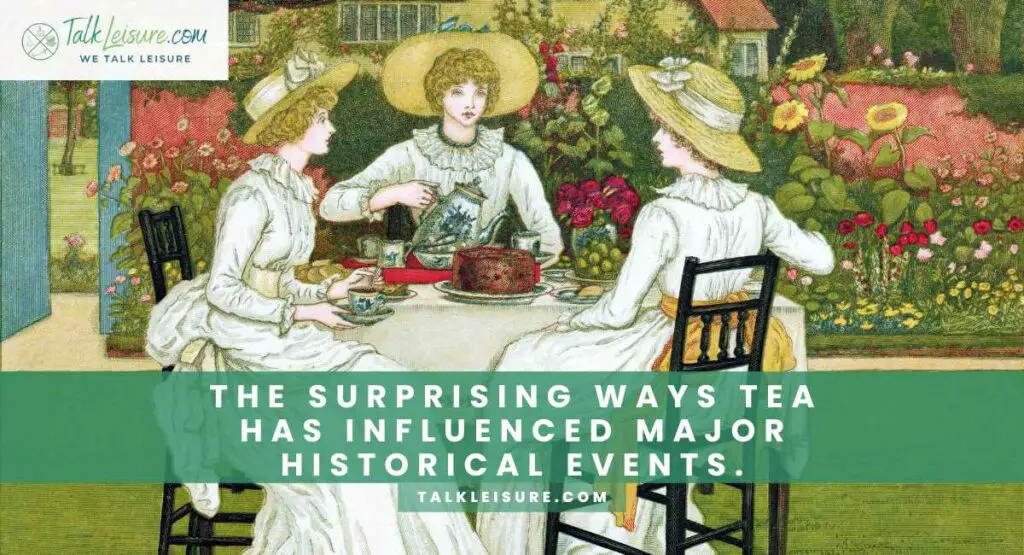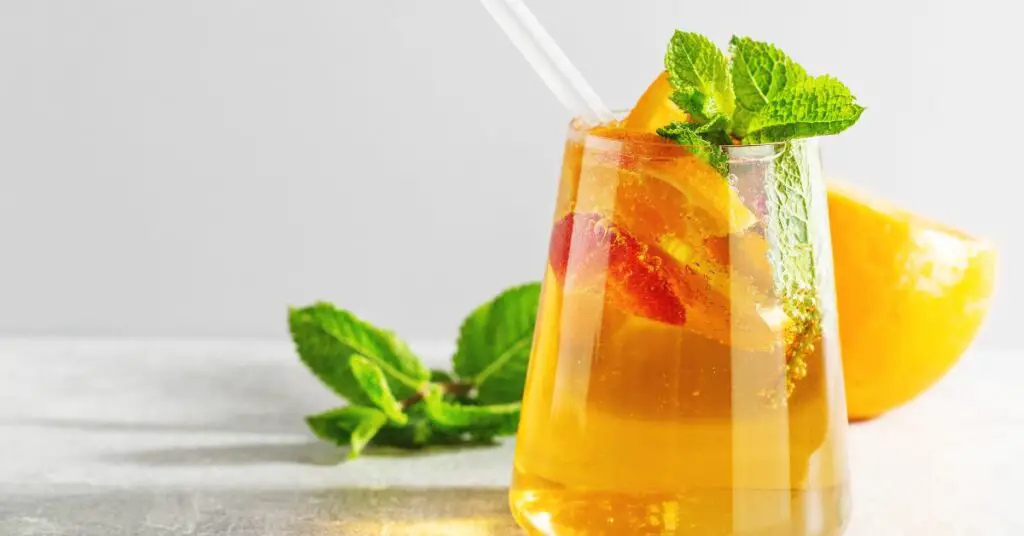In the heart of British tradition lies an experience that transcends mere indulgence—the exquisite ritual of afternoon tea.
From its humble beginnings with the Duchess of Bedford to its modern resurgence, this cherished tradition has evolved, adapting to the tastes and trends of the 21st century.
Join us on a journey through time and taste as we uncover the tales, etiquette, and delectable delights that define British afternoon tea. From cucumber sandwiches to clotted cream, and from historic tea rooms to themed extravaganzas, this is an exploration of a cultural icon that continues to enchant and captivate across the globe.
Also read: A beginner’s guide to high tea: Etiquette, menu, and more.
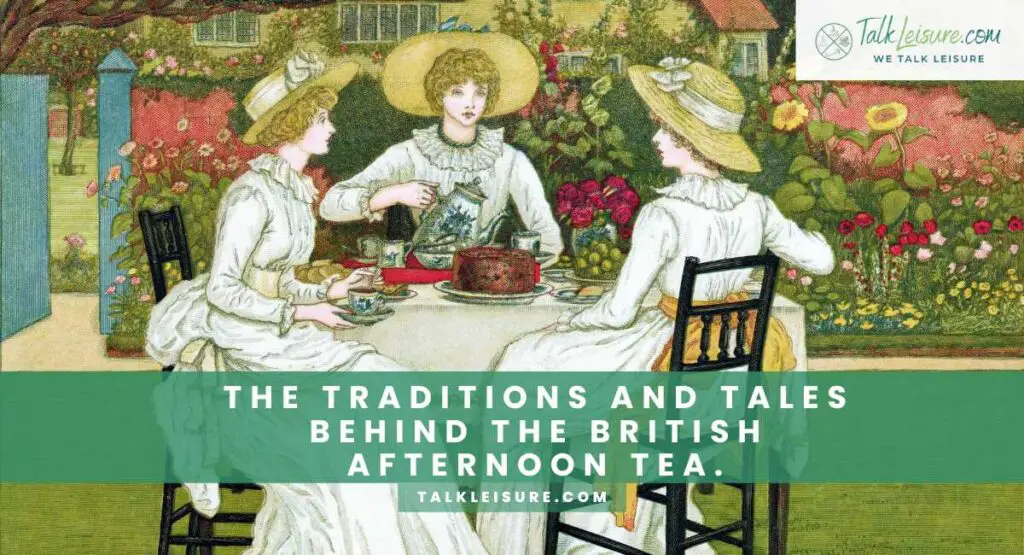
Introducing Afternoon Tea
All right, dear reader, let’s embark on a delightful journey through the world of afternoon tea—a time-honored tradition that combines elegance, etiquette, and an insatiable appetite for, well, everything delicious.
Brief History and Origins
Back in the 1840s, when Instagram was but a twinkle in some inventor’s eye, a certain Duchess of Bedford, Anna by name, found herself in a bit of a pickle. You see, lunch was an unreasonably long way from breakfast, and dinner was still ages away.
Anna, in a stroke of culinary genius, decided to bridge the gap with a light meal served with tea. And voila! Afternoon tea was born.
It was a revelation, I tell you—a revelation!
Evolution of Afternoon Tea in Britain
Now, you might be thinking, “Alright, so Anna had a nibble and a sip; what’s the big deal?” Well, hold on to your crumpets, because this caught on like wildfire. Soon, high-society ladies across Britain were swapping gossip and nibbling on cucumber sandwiches with fervor.
It became the de rigueur social event, a chance to flaunt the finest china and catch up on the juiciest scandals.
As time waltzed on, afternoon tea didn’t stay confined to the drawing rooms of the upper crust. It trickled down to the masses, making its way into tearooms, hotels, and eventually into our hearts (and stomachs). It’s a bit like that fashion trend your grandmother started; before you know it, everyone’s doing it!
There you have it! A little history, a touch of humor, and a lot of tea Stay tuned for more tales and tidbits about the charming world of British afternoon tea!
The Duchess of Bedford: A Tea-Time Trendsetter

Ah, the Duchess of Bedford, Anna herself – the unsung hero of every tea lover’s daydreams!
Anna, the 7th Duchess of Bedford
Let’s set the scene: England, early 1800s. Picture grandiose ballrooms, corseted gowns, and a whole lot of pomp and circumstance. Now, into this world stepped Anna, the 7th Duchess of Bedford. But even duchesses get a bit peckish, and Anna was no exception.
One fateful afternoon, Anna found herself in a bit of a pickle. Breakfast had been hours ago, and dinner was still eons away. Feeling a bit, shall we say, peckish, Anna demanded a little something to tide her over. And lo and behold, afternoon tea was born! It was like a light bulb moment, only with much more lace and crinoline.
Also read: A deep dive into Matcha: History, preparation, and benefits.
The Birth of Afternoon Tea
From that day forward, Anna made it a daily ritual. She’d gather a select group of pals for a bit of a natter and, of course, the crucial affair – tea. Now, this wasn’t just any tea; it was a lavish spread of sandwiches, scones, and dainty pastries. Anna had unwittingly created a phenomenon that would become a cornerstone of British culture.
Word got out, as it often does in high society, and soon, the ladies of the court were clamoring for their own taste of this midday magic. It wasn’t long before it spread like wildfire across the country. Suddenly, every well-to-do household was reserving a spot for afternoon tea, and the rest, as they say, is history.
So, raise your teacups to Anna, the Duchess of Bedford, the trendsetting genius who gifted us with this splendid tradition. Without her, we might all still be languishing in the doldrums between breakfast and dinner, and that’s a world I’d rather not imagine!
Tea Etiquette: A Delicate Affair
Tea, dear reader, is not just a beverage; it’s a ceremony, a dance of cups and saucers, a symphony of flavors. And like any good performance, there’s a set of rules to follow.
The Art of Tea Service
Imagine, if you will, a perfectly set table – porcelain teacups glistening, a teapot poised for pouring, and a selection of teas that would make even the most discerning connoisseur nod in approval. This, my friends, is the art of tea service.
First and foremost, the teapot. It should be pre-warmed to ensure your brew stays piping hot. Then the tea leaves, measured with precision.
The water, just off the boil, should cascade over the leaves like a gentle waterfall, releasing their flavors and aromas. And then, the waiting game – a few minutes of steeping to achieve that perfect balance.
Proper Tea Etiquette and Manners
Now, let’s talk about the ballet of behavior that accompanies tea. It’s not just about sipping, you know.
Pinkies down, my friend! Contrary to popular belief, there’s no need to extend your pinkie finger while holding the teacup. In fact, it’s positively frowned upon.
Hold the cup by the handle, between your thumb and forefinger, and bring it to your lips with grace.
And what of the stirring? Gentle circles, never clinking against the sides, should suffice. No furious whirlpools, please.
When it comes to milk and sugar, a word to the wise: they’re added after the tea, never before. And stirring should be done gently, in a straight line, no back-and-forth sawing motions, if you please.
And let’s not forget the all-important matter of scone procedure. Split it open, don’t slice it, and for the love of all things sacred, spread your cream and jam with care. There’s an ongoing debate about whether it’s cream first or jam first, but that’s a tale for another time.
So, dear reader, armed with this knowledge, you’re now equipped to partake in a tea ceremony with the grace and poise of royalty. Let’s keep those pinkies down and those cups held high!
The Quintessential Afternoon Tea Spread
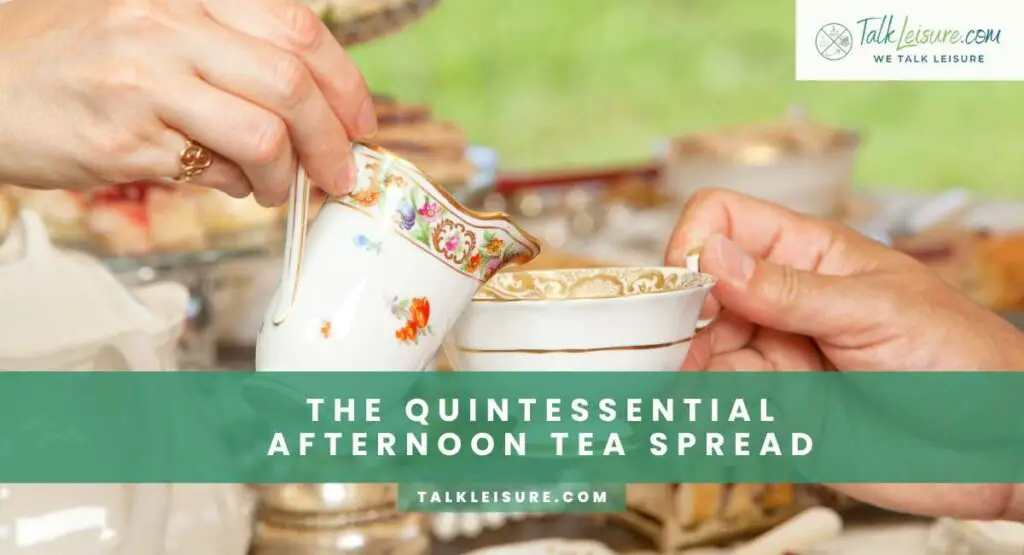
Now, let’s talk about the pièce de résistance of any afternoon tea affair – the spread! It’s not just a meal, it’s a gastronomic adventure.
Tea Selection and Brewing Tips
First things first, let’s select the star of the show – the tea itself. This isn’t a one-size-fits-all affair. Some might lean towards the robust charm of an Earl Grey, while others prefer the delicate notes of a Darjeeling. Then there are the herbal infusions, the green teas, and the adventurous blends that beckon.
Once you’ve chosen your leafy companion, it’s time for the brewing ritual. Water temperature, steeping time – these are not to be taken lightly. Too hot, and you risk a bitter brew; too short a steep, and the flavors won’t fully blossom. It’s a delicate dance, but one well worth mastering.
Also read: The secret world of tea sommeliers: How experts taste and rate tea.
Tiered Treats: Sandwiches, Scones, and Sweets
Now, onto the main event – the tiers of tantalizing treats.
Sandwiches
These aren’t just any sandwiches, mind you. These are dainty, finger-sized masterpieces. Cucumber with cream cheese, smoked salmon with dill, egg and cress – each one a bite-sized burst of flavor. And don’t forget to remove the crusts. After all, we’re not savages!
Scones
Ah, the heart and soul of any proper afternoon tea. These golden, crumbly wonders are best served warm, with a dollop of clotted cream and a dollop of jam. The eternal debate – cream or jam first – continues, but either way, it’s a heavenly indulgence.
Sweets
This tier is where the imagination runs wild. Miniature pastries, delicate tarts, and decadent cakes await. From lemon drizzles to chocolate eclairs, each one is a tiny piece of heaven. It’s like a dessert symphony, a sweet serenade to your taste buds.
And let’s not forget the presentation! The treats are displayed on a tiered stand, a tower of temptation that beckons to all who behold it.
So, dear reader, armed with this knowledge, you’re ready to create an afternoon tea spread fit for royalty. It’s a symphony of flavors, a ballet of brewing, and a feast for the senses. Bon appétit!
Scones: The Heart of Afternoon Tea
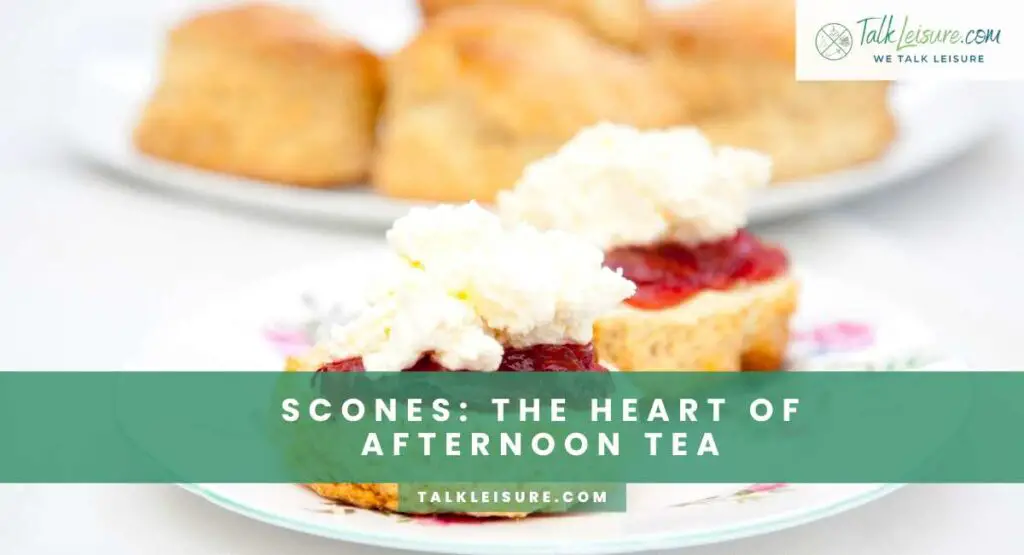
Ah, scones – those golden, crumbly marvels that steal the show at any respectable afternoon tea. Let’s dive into the heart of this tea-time delicacy.
The Origin of Scones
Now, where did these delectable treats come from? Legend has it that scones trace their ancestry back to bonnie Scotland. The name itself might be derived from the Scots term ‘scon’, which means a flat, round cake. These humble delights were first baked on griddles, not in ovens, and they made a hearty staple for weary travelers.
Over time, scones evolved. The recipe traveled, adapted, and refined itself. Today, we’re left with a culinary masterpiece, the scone as we know it – buttery, flaky, and simply divine.
Jam First or Cream First? The Great Debate
Now, let’s tackle the age-old question: should you slather on the jam first, then the cream, or is it cream first, then jam? It’s a debate that’s sparked many a lively discussion at tea tables across the land.
The Jam First Advocates
These purists argue that a generous layer of jam provides a sticky foundation for the cream, ensuring it adheres beautifully to the scone. It’s all about structural integrity, you see.
The Cream First Champions
On the other side of the spectrum, we have those who believe that cream is the star of the show, and it should take center stage. The jam, in this camp, is merely a colorful, fruity supporting act.
So, which side of the scone fence do you find yourself on? It’s a personal preference, and there’s no wrong answer. After all, in the grand scheme of things, the most important thing is that you’re savoring every crumb of this delightful creation.
In conclusion, scones are the beating heart of afternoon tea, a testament to the simple pleasures of life. Whether you’re Team Jam First or Team Cream First, one thing’s for sure: these little golden wonders have a special place in our hearts and on our tea tables. Enjoy every mouthful!
Sandwiches and Savories: A Tower of Delights
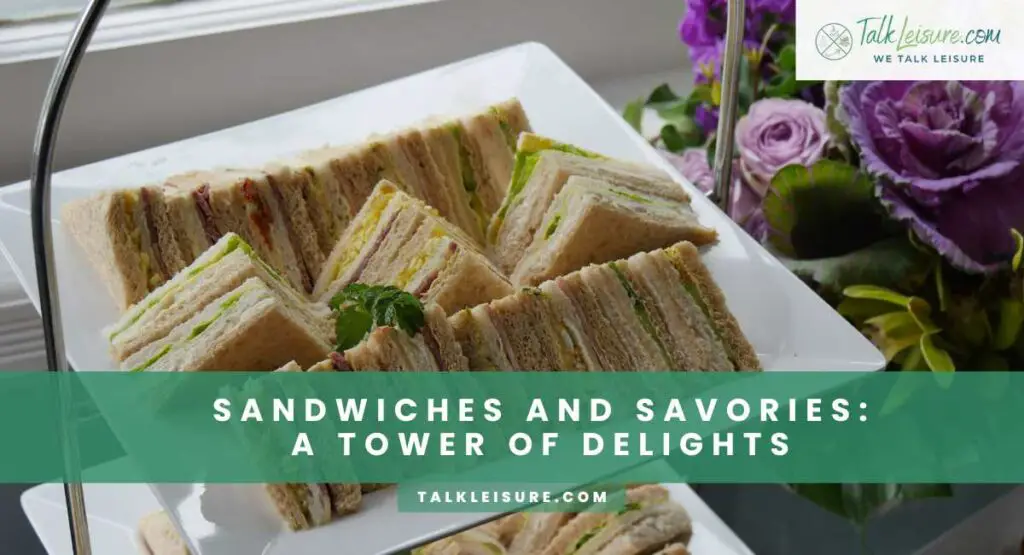
Now, let’s turn our attention to the savory side of the afternoon tea spread. These little bites of goodness are a testament to the art of culinary creativity.
Traditional Sandwich Fillings
We begin with the classics, the time-honored fillings that have graced tea tables for generations.
Cucumber with Cream Cheese
Ah, the quintessential tea sandwich. Thin slices of crisp cucumber nestled between layers of creamy, herbed cheese. It’s light, it’s refreshing, and it’s the epitome of elegance.
Smoked Salmon and Dill
This pairing is a gift to the taste buds. The smoky, velvety salmon dances with the bright, aromatic notes of dill. A squeeze of lemon, a touch of cracked pepper, and you’ve got a symphony of flavors.
Egg and Cress
A nod to simplicity, yet bursting with flavor. Creamy, gently curried egg salad, topped with a sprinkle of fresh cress, all cradled between slices of soft bread. It’s comfort on a plate.
Creative Twists on Savory Bites
Now, let’s venture into the realm of culinary innovation. After all, tradition is wonderful, but a little creativity can elevate the tea experience to new heights.
Pesto and Sun-Dried Tomato
Picture this: vibrant green pesto, sun-drenched tomatoes, and a whisper of Parmesan cheese, all embraced by slices of warm, crusty bread. It’s a Mediterranean vacation for your taste buds.
Roast Beef with Horseradish Cream
A carnivore’s delight! Tender slices of succulent roast beef, slathered with a tangy horseradish cream, nestled in a pillowy roll. It’s a flavor explosion that’ll have you reaching for seconds.
Goat Cheese and Fig
Sweet meets savory in this delightful combination. Creamy goat cheese, paired with the luscious sweetness of fig preserves, all hugged by slices of nut-studded bread. It’s a harmonious marriage of tastes and textures.
These inventive twists on tea sandwiches bring a modern flair to the traditional tea spread. They’re a testament to the culinary creativity that continues to shape the afternoon tea experience. So, whether you’re a purist or an adventurous eater, there’s a sandwich here to tickle your taste buds. Bon appétit!
Sweet Temptations: Cakes and Pastries
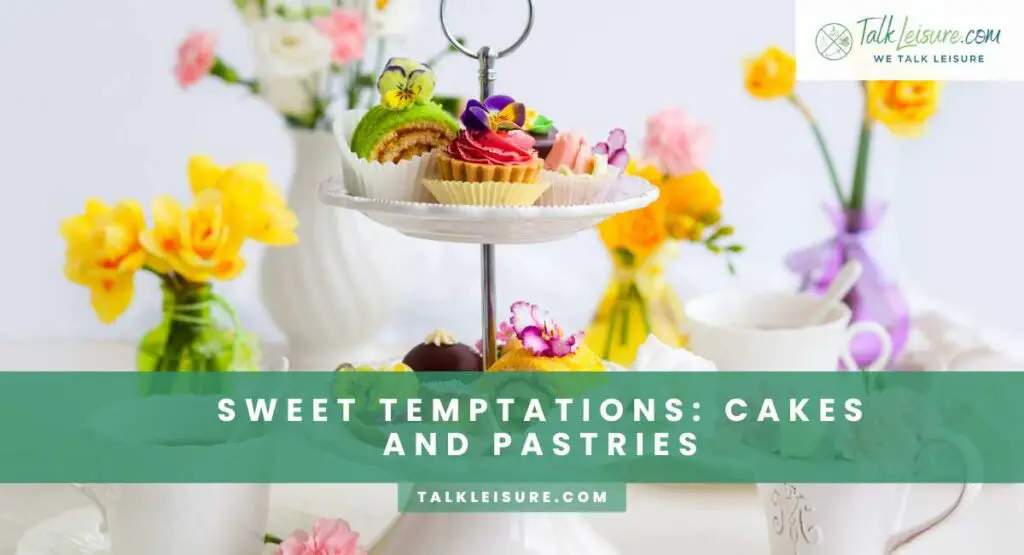
Now, let’s turn our attention to the crowning glory of any afternoon tea – the sweet treats that beckon with their sugary siren call.
Classic Tea Cakes: Victoria Sponge and Battenberg
Victoria Sponge
Named in honor of Queen Victoria herself, this cake is a true British classic. Two layers of light, fluffy sponge cake, sandwiched together with a generous layer of raspberry jam and a dollop of whipped cream. It’s simplicity at its finest, a testament to the beauty of uncomplicated flavors.
Battenberg
Ah, the checkerboard wonder. Marzipan encases a perfectly symmetrical pattern of pink and yellow sponge cake, held together with apricot jam. Its geometric perfection is a visual delight, and its almond-infused taste is a sensory masterpiece.
Pastries, Tarts, and Delicate Desserts
Now, let’s venture into the realm of delicate decadence. These pastries and tarts are like edible works of art.
Eclairs
Long, slender fingers of choux pastry, filled with silky cream and topped with glossy chocolate icing. Each bite is a harmonious blend of textures and flavors, a testament to the pastry chef’s craft.
Fruit Tarts
A buttery pastry shell, cradling a luscious bed of pastry cream, adorned with a vibrant array of fresh fruits. It’s a symphony of colors and flavors, a celebration of nature’s bounty.
Lemon Curd Tarts
Tangy, citrusy curd nestled in a tender, flaky crust. It’s a burst of sunshine in every bite, a zesty counterpoint to the sweeter offerings on the tea table.
These sweet temptations are the jewel in the crown of any afternoon tea. They’re a testament to the artistry and skill of pastry chefs, and they’re sure to leave a lasting impression on your taste buds.
So, whether you’re savoring a classic or indulging in something new, these desserts are a delightful conclusion to a tea-time feast. Enjoy every delectable bite!
The Role of Clotted Cream and Jam
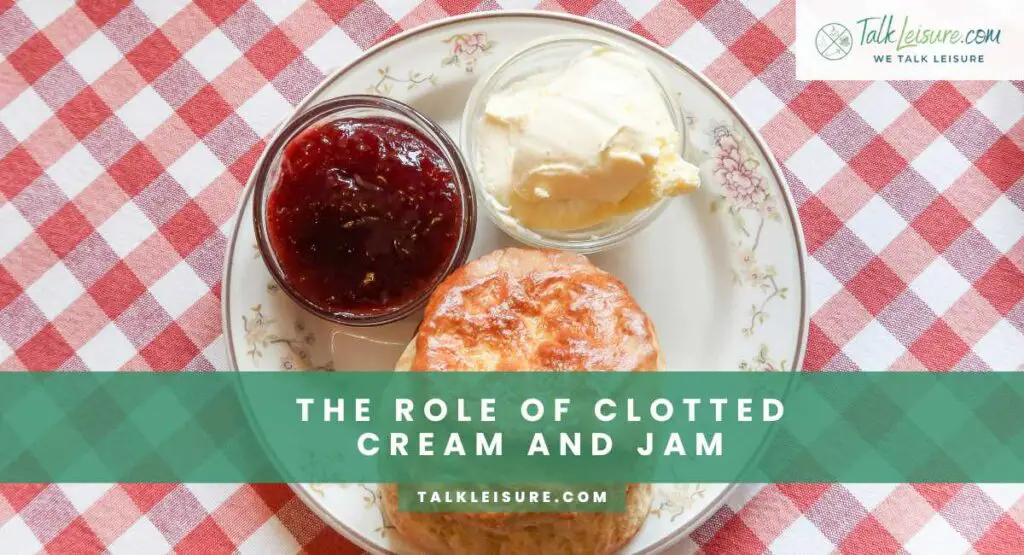
Ah, the dynamic duo that elevates scones from mere pastries to heavenly indulgence – clotted cream and jam. Let’s delve into their pivotal role in the afternoon tea experience.
Authentic Ingredients and Varieties
Clotted Cream
This creamy delight hails from the rolling hills of Devon and Cornwall, where it’s crafted with utmost care. Made from the unhurried heating of rich, unpasteurized milk, clotted cream emerges with a luscious, velvety texture and a delicate, nutty flavor. It’s the stuff of dreams, the crown jewel of any self-respecting scone.
Jam
Now, when it comes to jam, the choices are as varied as the colors in an artist’s palette. From classic strawberry to the tangy zing of raspberry, and even exotic varieties like apricot and blackcurrant – the options are tantalizing. What’s crucial is the fruit’s natural sweetness, balanced with a touch of tartness, creating a symphony of flavors that complements the richness of the cream.
Where to Find the Best Clotted Cream
If you’re on a quest for the crème de la crème of clotted cream, look no further than the quaint dairies and farms of Devon and Cornwall. Here, artisans craft this velvety ambrosia with a dedication that borders on the sacred.
The freshest, purest milk is simmered slowly, allowing the cream to rise and form a heavenly crust. It’s a labor of love that yields a product fit for royalty.
For those not fortunate enough to roam the West Country, fear not. Many purveyors now offer clotted cream online, bringing a taste of this British treasure to doorsteps around the world. Seek out reputable providers who prioritize quality and authenticity, ensuring that every dollop transports you to the verdant pastures of England.
In conclusion, clotted cream and jam are the unsung heroes of the afternoon tea spread. They elevate scones to a realm of unparalleled indulgence, infusing each bite with a symphony of textures and flavors.
So, whether you’re in the heart of the West Country or across the seas, seek out the finest cream and the most delectable jam – your scones will thank you.
Tea-Time Traditions: A Cultural Experience
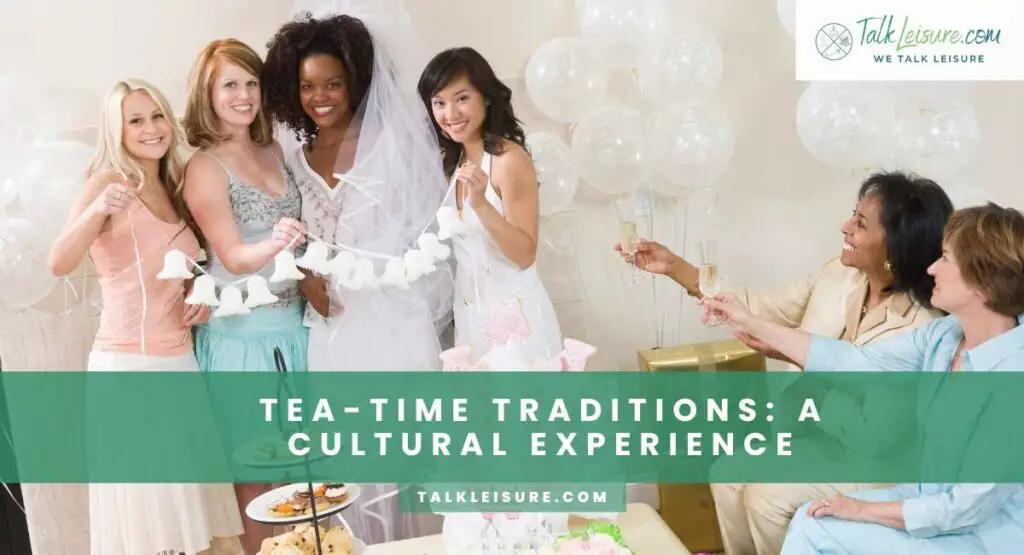
Tea, it seems, is not just a drink; it’s a cultural cornerstone, a ceremony that holds significance across various occasions and seasons. Let’s explore the rich tapestry of tea-time traditions.
Celebrating Special Occasions with Tea
Tea has a knack for turning ordinary moments into extraordinary celebrations. In Britain, it’s not unusual for engagements, bridal showers, and baby christenings to be marked with a sophisticated afternoon tea. Picture tiers of delicate treats, bubbling champagne, and a backdrop of laughter and joy.
And let’s not forget the timeless tradition of the “Afternoon Tea Party”. Birthdays, anniversaries, and reunions find their rightful place amidst tiers of sandwiches, scones, and sweets. It’s an occasion where refinement meets revelry, and where the clinking of teacups echoes the music of mirth.
Seasonal Variations in Tea Traditions
Tea dances through the seasons, adapting and evolving with the changing landscape.
Spring
As buds burst into bloom, afternoon tea takes on a fresh, floral note. Pastel-hued macarons, lavender-infused scones, and delicate green teas grace the table, celebrating nature’s revival.
Summer
In the heat of summer, tea becomes a cooling respite. Iced teas take center stage, mingling with an array of vibrant fruits and herbs. Think of it as a tea garden party, with flavors as bright and sunny as the day.
Autumn
As leaves turn gold and scarlet, tea embraces warmer, spicier notes. Cinnamon-laced pastries, pumpkin-infused scones, and robust chai teas fill the air with a cozy, comforting aroma.
Winter
When the world dons its frosty mantle, tea becomes a source of warmth and solace. Rich, hearty blends, accompanied by gingerbread treats and spiced fruitcakes, create a haven of comfort and joy.
These seasonal variations in tea traditions add depth and richness to the experience, reflecting the ever-changing tapestry of nature.
In conclusion, tea is more than a beverage; it’s a passport to cultural experiences, a thread that weaves through the tapestry of life’s occasions and seasons.
Whether celebrating milestones or embracing the rhythms of nature, tea brings people together in a symphony of flavors and traditions. Cheers to the endless possibilities that each teacup holds!
Famous Tea Rooms and Historic Venues
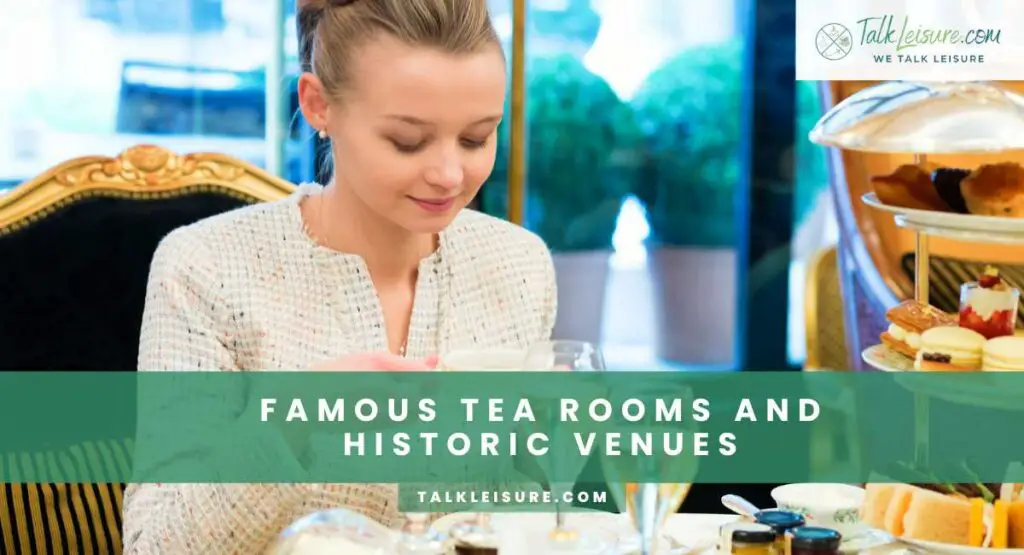
Tea rooms and historic venues hold a special place in the heart of British culture. These establishments are not just placing to sip tea; they are living archives of tradition and elegance. Let’s embark on a journey to some of the most iconic venues.
The Ritz: A Pinnacle of British Tea Culture
When it comes to afternoon tea, The Ritz stands as a paragon of opulence and refinement. Nestled in the heart of London, this legendary hotel has been serving tea to discerning guests since the early 20th century. Picture gilded ceilings, plush upholstery, and impeccable service – all setting the stage for an afternoon tea experience that’s nothing short of extraordinary.
The Ritz’s tea service is a symphony of perfection, with every element curated to perfection. From the finest loose-leaf teas to delicate finger sandwiches, and an array of exquisite pastries, each bite and sip is a testament to the hotel’s dedication to the art of afternoon tea.
Notable Tea Rooms Across Britain
Beyond the Ritz, Britain boasts an array of tea rooms that have etched their names into the annals of tea history.
Betty’s Tea Rooms (Harrogate, York, and Ilkley)
With a legacy spanning over a century, Betty’s is a Yorkshire institution. Its art deco interiors, delectable treats, and extensive tea selection make it a must-visit for any tea aficionado.
The Pump Room (Bath)
Located in the historic city of Bath, The Pump Room offers a taste of Regency-era grandeur. With live classical music and a stunning Georgian setting, it’s an experience steeped in history and elegance.
The Bridge Tea Rooms (Bradford-on-Avon)
Tucked away in a 17th-century building, this tea room is a step back in time. Wooden beams, a roaring fire, and an extensive tea menu create a cozy, old-worlde atmosphere.
The Willow Tea Rooms (Glasgow)
Designed by the renowned Charles Rennie Mackintosh, this tea room is a masterpiece of Art Nouveau design. It’s a testament to the fusion of art and tea, offering an experience that’s as visually enchanting as it is gastronomically delightful.
Each of these tea rooms and historic venues offers a unique glimpse into the cultural tapestry of Britain. They are not merely places to indulge in tea and treats; they are living, breathing monuments to a tradition that has withstood the test of time.
When you step into these hallowed halls, you’re not just having tea; you’re experiencing history.
The Resurgence of Afternoon Tea
After a period of waning popularity, afternoon tea has experienced a magnificent resurgence in the 21st century. Let’s explore the exciting modern trends and innovations that have breathed new life into this cherished tradition.
Modern Trends and Innovations

Global Influences
The world has become a smaller place, and with it, the flavors of afternoon tea have diversified. Fusion-inspired teas, blending traditional British elements with international influences, have emerged. Think matcha-infused scones or chai-spiced sandwiches. It’s a global culinary journey on a tiered stand.
Health-Conscious Options
In an era of wellness, afternoon tea has adapted. Health-conscious options have found their way onto menus, with gluten-free, vegan, and low-sugar variations becoming commonplace. It’s an acknowledgment that indulgence can still be mindful.
Interactive Experiences
Some establishments have taken afternoon tea to a whole new level, offering interactive experiences. Guests might be invited to decorate their own pastries or even blend their own bespoke teas. It’s a hands-on approach that transforms tea into an immersive art form.
Afternoon Tea in the 21st Century
Social Media and Afternoon Tea
In this digital age, afternoon tea has become an Instagram sensation. The visual appeal of tiered treats, delicate china, and elegantly poured tea has made it a favorite subject for foodie influencers. Afternoon tea, once a hidden gem, now shines brightly in the social media spotlight.
Pop-Up and Themed Teas
Beyond traditional tearooms, pop-up afternoon teas and themed events have become all the rage. From Alice in Wonderland extravaganzas to Harry Potter-themed teas, there’s an afternoon tea experience for every interest and fantasy.
Innovative Tea Pairings
The world of tea has expanded beyond traditional blends. Now, tea sommeliers expertly pair specific teas with each course, enhancing the overall dining experience. Imagine a delicate oolong with seafood sandwiches or a smoky Lapsang Souchong alongside rich, chocolatey desserts.
In the 21st century, afternoon tea has undergone a renaissance, blending tradition with innovation. It’s no longer confined to dusty drawing rooms; it’s a dynamic, evolving experience that continues to captivate and delight.
With its finger on the pulse of culinary trends and a respect for its storied past, afternoon tea has proven that it’s here to stay. Cheers to the tea renaissance!
Conclusion
As we bid adieu to our exploration of British afternoon tea, we’re reminded that it’s more than a meal—it’s a living testament to cultural evolution. From Duchess Anna’s ingenious reprieve to its contemporary resurgence, tea remains a cherished tradition.
Its embrace of global influences, health-conscious options, and interactive experiences heralds a bright future. Social media’s lens has transformed tea into an art form for the digital age.
Pop-up events and themed teas promise endless enchantment. With innovative pairings and a dedication to tradition, afternoon tea stands as a timeless beacon of refined indulgence. Here’s to the enduring magic of tea, forever steeped in elegance.
Frequently Asked Questions
- What is British tea like?
British tea, often simply referred to as “tea,” is a quintessential part of British culture. It typically refers to black tea, specifically blends like Assam, Ceylon, and Kenyan teas.
It’s known for its strong, robust flavor and dark amber color. Traditionally, it’s served with milk and sometimes sugar, but the strength of the tea can vary according to personal preference. Some might opt for a strong brew that can almost stand a spoon upright, while others prefer a lighter, more mellow infusion.
Tea is a staple of British daily life, and the famous “afternoon tea” is a beloved tradition involving a light meal of tea, sandwiches, scones, and pastries. The Brits take their tea seriously, and there’s even a specific etiquette around how it’s prepared and served.
In recent years, there has also been a growing interest in specialty and herbal teas in Britain, but the classic black tea with milk remains a cultural touchstone.
- Who first put milk in tea?
The practice of adding milk to tea is believed to have originated in the 17th century in England. It’s thought that the trend was popularized by Catherine of Braganza, the Portuguese queen consort of King Charles II of England.
At the time, tea was a relatively new and expensive import, and the addition of milk was seen as a way to cool the hot beverage and prevent delicate porcelain cups from cracking. Additionally, milk was a sign of wealth and luxury, so adding it to tea became a fashionable practice among the aristocracy.
Over time, the tradition of adding milk to tea became deeply ingrained in British culture and remains a prevalent custom to this day.
- What time is British tea time?
British tea time traditionally refers to the afternoon tea ritual, which is typically served between 3:30 and 5:00 in the afternoon. This practice has historical roots in 19th-century Britain and was popularized by Anna, the Duchess of Bedford.
However, it’s important to note that in modern times, the term “tea time” can also refer to the evening meal in some regions of the UK. This meal, which is similar to what is known as “dinner” in other parts of the country, is typically eaten between 6:00 and 7:30 in the evening.
So, in summary, “tea time” can refer to either the traditional afternoon tea or the evening meal, depending on the context and the region within the UK.


